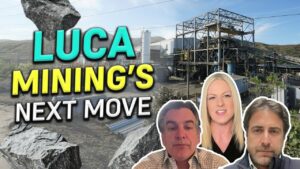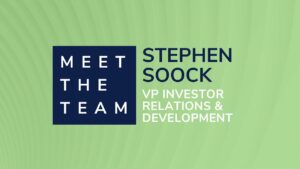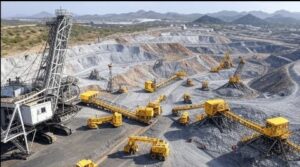Executives
Bridget Fread – Director IR
Mitchell Krebs – President and CEO
Peter Mitchell – SVP and CFO
Frank Hanagarne – SVP and COO
Joe Philip – Senior Vice President and Chief Development Officer
Hans Rasmussen – Vice President of Exploration
Analysts
Michael Dudas – Stern, Agee
Chris Lichtenheldt – Dundee Capital Market
Chris Thompson – Raymond James
Trevor Turnbull – Scotiabank
Ilya Balabanovsky – Deutsche Ban
Garrett Nelson – BB&T Capital Markets
Coeur Mining, Inc. (CDE) Q3 2013 Earnings Conference Call November 7, 2013 11:00 AM ET
Operator
Good morning. My name is Jessica and I’ll be your conference operator today. At this time, I would like to welcome everyone to the Third Quarter 2013 Financial Results Conference Call. All lines have been placed on mute to prevent any background noise. After the speakers¡¯ remarks, there will be a question-and-answer session. (Operator Instructions). Thank you. Ms. Bridget Freas, you may begin your conference.
Bridget Freas
Thank you, Jessica. Welcome everyone to our third quarter earnings conference call. I am Bridget Freas, Director of Investor Relations. This call is also being webcast on our website at www.coeur.com where we have posted slides to accompany our remarks. Telephonic replay of the call will be available on our website through November 21st.
We will be discussing some forward-looking and other preliminary information today and we caution our audience that such statements involve risks and uncertainties that could cause actual results to differ materially from projections.
Please review our cautionary statement shown on slide two and review the risk factors, including some that are specific to our industry described in our latest annual and quarterly financial reports filed with the U.S. SEC and Canadian regulators. We will also be discussing some non-GAAP figures that we believe provide meaningful information to our investors. The appendices to our slides contain a reconciliation of the non-GAAP information to U.S. GAAP.
On the call today are Mitchell Krebs, President and Chief Executive Officer; Peter Mitchell, Senior Vice President and Chief Financial Officer; Frank Hanagarne, Senior Vice President and Chief Operating Officer; Joe Philip, Senior Vice President and Chief Development Officer; and Hans Rasmussen, Vice President of Exploration.
We¡¯ll get started. Mitch, please go ahead.
Mitchell Krebs – President and CEOOkay. Thanks, Bridget. Hello everyone and thank you for joining us today to discuss our third quarter results. We¡¯ve come a long way compared to last year¡¯s third quarter. Let¡¯s take Palmarejo as an example where cash operating costs per ounce have dropped by 26%. Head grades are higher and more consistent for both silver and gold. Silver production has increased 5% and gold production has 26% compared to last year¡¯s third quarter.
There is no doubt we¡¯ve made a lot of progress but we must remain focused on three main drivers. Number one is to efficiently and safely operate our existing assets and to improve on our execution against our short term and long term plans. Number two is to maximize our net cash flow by reinvesting in our existing assets. We have several opportunities to increase revenues and decrease cost for minimal capital that we are pursuing. Number three is to expand our reserves and resources at our operations this maximizes operating flexibility and is the most cost effective way to grow the net asset value of our company.
During the third quarter our silver production was down 9% from the second quarter mostly due to lower ounces produced at Rochester. Our gold production was up about 5% mainly because of a very strong quarter from Kensington. At Rochester we crushed blazed our plans number of tons on pads during the third quarter, but leaching of this material did not begin until October 1. As a result we are anticipating a large number of silver and gold ounces to be recovered in the fourth quarter and be very well positioned heading into 2014.
Kensington had a great quarter as we had expected. Gold production increased 25% and cash operating costs per ounce dropped 11% and $988 an ounce compared to the second quarter. Overall our cash operating costs for silver ounce pumped up in the third quarter as a result of the lower production ounces at Rochester, but our year-to-date cash costs for silver ounce was $9.66 give us comfort that we should end the year solidly within our guidance range of $9.50 to $10.50 for silver ounce.
Average realized prices for silver and gold were down again, 8% for silver and 6% for gold compared to the second quarter and they were down 30% and 20% respectively compared to last year¡¯s third quarter. Our exploration efforts at Palmarejo and Kensington are really paying off.
I keep saying that we have been playing catch up on our drilling. Since we have increased funding for explorations over the past two years we are now seeing results that give us a much more positive long term view of our operations. Three quick examples of this. We announced increase reserves at Rochester during the third quarter of more than 90%. We also saw some terrific drill results from recent drilling at Rochester at new targets located near the existing pit. At Palmarejo, we are having success and extending the operating life at the main Palmarejo mine both at the surface and underground. At the same time, we are defining and developing resources at a series of other growing deposits located to the South, that we expect will become future sources of production. At Kensington, we continue to drill out higher grade ore zones in order to increase production levels, decrease costs and increase the mine’s net cash flow. We saw the impact this higher grade material can have on Kensington¡¯s results during the third quarter where our average head grade increased 11% compared to the second quarter.
We are laser focused on maximizing cash flows and on providing attractive returns for our investors. During the first nine months of the year, we have made great strides in identifying and implementing opportunities to enhance revenue from our operations. We have also managed to reduce operating costs by over $24 million or about 6%. We have cut expected full year capital expenditures by about 20% and we’ve seen significant reductions in supplies and materials inventory. All these efforts are ongoing and will not stop. We also believe current market conditions provide a unique opportunity for us to selectively pursue new growth opportunities that will enhance our pipeline and improve the overall quality of our portfolio of assets.
Now I’ll turn it over to Peter Mitchell, to take us through the third quarter financial results.
Peter Mitchell – SVP and CFOThank you Mitch.
Slide six highlights our third quarter financial results. We sold 4.9 million ounces of silver and 76,466 ounces of gold, generating about $201 million in metal sales and $27 million in cash flow from operations during the quarter. Consolidated production costs were about $132 million in the quarter down 8% compared to the second quarter. Our G&A expense increased about $1.2 million sequentially with the majority of the increase coming from one-time expenses related to our corporate office relocation to Chicago.
Capital expenditures were about $33 million in the third quarter or 20% higher than the second quarter as we completed expansion projects of Rochester and San Bartolome. Cash and cash equivalents were about $211 million. At September 30, 2013, the company¡¯s $100 million revolving credit facility remains undrawn. Among the uses of cash in the third quarter was $15 million for share repurchases.
The table on slide seven shows average realized prices, ounces produced and sold, and cash operating costs on a per ounce basis. We are very pleased with the improved performance at Kensington during the quarter. Palmarejo and San Bartolome also had a strong quarter with Rochester being the slow driver of an increase in cash operating cost to $11.38 per silver ounce.
Based on recent volatility or volatility generally in metals prices we’ve seen this year, Coeur implemented a hedging program covering our fourth quarter and first quarter 2014 production with the goal of preserving all of the upside exposure to silver and gold prices, while limiting the downside repurchase put options covering about 20% of our expected silver production and 35% of our expected gold production for the fourth quarter.
We recently purchased put options with similar terms to hedge a portion of our expected first quarter 2014 production as well. We¡¯ll continue to evaluate our cash flow protection strategy for the balance of 2014.
Now I¡¯ll turn the call over to Frank Hanagarne who will take us through the third quarter operational performance highlights.
Frank Hanagarne – SVP and COOThanks Peter. Slide 10 lists the third quarter 2013 operational highlights and priorities for all four of our primary mines. Third quarter 2013 production at our Kensington gold mine in Alaska was up 25% from the second quarter and cash operating cost per ounce decreased 11% mainly due to higher grades. We expect continued strong production in grades at Kensington in the fourth quarter.
Operating performance at our Rochester, silver gold mine in Nevada was affected by the completion of several expansion-related projects during the quarter. We expect significantly increased production at Rochester in the fourth quarter 2013 and in 2014 at lower cash operating cost than the third quarter.
Production at our Palmarejo mine in Mexico resulted in 6% increase in gold production and a 6% drop in silver production over second quarter results. Recovery rates and cash operating cost improved for the third quarter. Our San Bartolom¨¦ mine in Bolivia had another solid quarter with consistent production in cash operating cost compared to the second quarter. The mill expansion at San Bartolom¨¦ is complete and expected to maintain annual production levels of around 6 million ounces of silver for the next several years.
Turning now to the operating performance details of each of our mines, slide 11 shows third quarter 2013 highlights for Palmarejo. 1.9 million silver ounces and 29,893 gold ounces were produced at Palmarejo in the third quarter at cash operating cost of $2.79 per silver ounce, a 14% improvement compared to the second quarter. Process recovery enhancements, improved recovery rates for both silver and gold and higher grades are expected for the fourth quarter.
We have decided to temporarily delay completion of construction and commencement of mining in Guadalupe which was initially expected to begin commercial production in early 2014. We are working towards replacing these ounces with — cost ounces from other areas at Palmarejo. By doing so we expect to generate higher operating cash flow at Palmarejo in 2014 than we originally planned.
Turning to slide 12 San Bartolom¨¦ generated $29 million in sales in the third quarter, down from $49 million in the second quarter as excess inventory right at the start of the quarter raise second quarter metal sales. Third quarter production was comparable to the second quarter at 1.5 million ounces. Cash operating cost for silver ounce were $12.80 compared to $12.89 in the second quarter.
Turning to slide 13 third quarter production at Rochester was 595,268 ounces of silver and 4,824 ounces of gold, decreases of 29% and 49% respectively compared to the second quarter. Third quarter production was affected by delays in completion of construction and permitting for the stage three lease pad expansion. This caused cash operating cost per silver ounce at Rochester to increase to $35.83. We expect a significant improvement in cash operating cost and production levels in the fourth quarter as the expansion projects are now complete. Crushing performance has already improved following the addition of metal removal equipment to the crushing plant. In fact September was a record crushing month at Rochester. Permits to begin leaching at the extended area of the stage three leach pad will receive on September 30th.
Significant tonnes of fresh material were under leach at the start of the fourth quarter. We expect relatively quick leach cycles for this material which contribute to a significant increase in produced ounces in the fourth quarter and throughout 2014.
Kensington produced 24,049 ounces of gold in the third quarter, a 25% increase from the second quarter. This contributed to an 11% decrease in cash operating cost to $988 per gold ounce in the third quarter. Average mill head grade of 0.20 ounces per ton was 11% higher than the second quarter due to processing of higher grades stopes.
I will now turn the call over to Joe Philips to discuss our development efforts.
Joe Philip – Senior Vice President and Chief Development OfficerThank you, Frank and good morning everyone. Coeur continued to execute on its plan to tailor its capital programs in light of current low metal prices during the third quarter. As mentioned in previous quarters, we have successfully scaled back our capital spend to focus on high return and high priority projects has resulted in a 20% reduction in our forecasted capital spending for the full year.
Still included in our capital programs were the completion of the San Bartolom¨¦ process plant expansion and the Rochester crushing and leach pad capacity expansion. We believe prioritizing opportunities did offer the highest return and shortest payback has enabled us to manage capital spending without any long-term impacts on overall company production or mine life.
Based on recent exploration successes at Palmarejo, we believe we will be able to maintain current production levels from existing mining fronts and postpone capital commitments for production extensions on projects such as Guadalupe which we have decided to delay. We are also pursuing a strategy streamlining the Palmarejo plant and improving metal recoveries over a wider range of ore types and oxidation states.
The feasibility study at our La Preciosa project is moving forward. We now have more clarity on how the new tax and royalty initiatives in Mexico will likely be approved. We began evaluating strategies to mitigate these royalties in our preliminary economic assessment by proposing a leasing of principle mobile and process equipment. We continue to evaluate the impact of this tax legislation and refine strategies to optimize La Preciosa within the framework of the new legislation.
Our goal over coming months will be to continue improving project economics and hopefully make La Preciosa a compelling project in current metal prices. Significant among our optimization strategies is to reduce the cost of power and water which together represent 28% of our total projected operating costs. One bring spot in Mexico¡¯s new fiscal reform is it appears to further facilitate access to privatization of power projects. We feel this may provide an opportunity to reduce our forecast operating cost for the project.
As I mentioned last quarter, we are also expanding our understanding of additional identified veins within our current picture. These veins have the potential to reduce our overall strip ratio and expand minable resources. Metallurgical testing to optimize recoveries and reduce plant operating cost was also commenced.
And now over to Hans Rasmussen, he will report on our exploration activities for the quarter.
Hans Rasmussen – Vice President of ExplorationThanks Joe. Good morning. During the quarter our primary focus in exploration was in or near our operations. We had nine drills engaged at Palmarejo, Rochester and Kensington with trenching at San Bartolome. Our primary focus in exploration is to grow resources and assist our operations team in extending life of mine models. Additionally our exploration crews worked on the La Preciosa feasibility study. And we reviewed several new opportunities in the Great Basin of Nevada, Utah, Mexico, Peru, Chile and Bolivia.
My presentation will highlight the exciting new drill results from Palmarejo, Rochester and Kensington. For your reference we’ve included a complete list of third quarter drill results in the appendix to this presentation.
As part of our strategy to extend the life of high grade resources we’re currently mining at Palmarejo, a major focus of our exploration efforts has been around the existing mine. Slide 20 shows several exploration targets along the 10 kilometer structural zone from the Palmarejo mine in the North to the La Curra zone at the Southern end. Drilling in the quarter was focused at the Palmarejo surface and underground, Guadalupe underground and El Salto surface.
Our second view of the Tucson and Chapotillo pits on slide 21 highlights the results from Hole 93 located on the East side of the pit. This Hole cut a mineralized, north©\south structural zone referred to as Footwall La Prieta Zone.
Slide 22 highlights towards Hole 7 cuts deeper into the Footwall La Prieta structural zone. These drill results demonstrate the presence of multiple parallel mineralized [fall] zones. We believe these could call us a depth from a wider single mineralized structural zone with similar grades to those we have mine at our 76 and 108 clavos. In the fourth quarter 2013 and into early 2014, we¡¯ll test this concept with additional drilling. If successful, this zone has potential to extend the open-pit mine life at Palmarejo.
Turning to slide 23, during the quarter drilling continued underground at Guadalupe and from the surface at El Salto zone. Drilling also commenced on the southern end of Las Animas to extend known near surface mineralization towards the recently acquired La Curra property. (inaudible) on the new core holes, we believe La Curra has near surface mineralization and topography amenable to future open-pit resource model.
As shown on slide 24 the El Salto zone continues to deliver good results from multiple near surface tax structural zones. Given their geometry, we expect additional drilling in this zone also as potential for a resource that can be open-pit mine.
Now let¡¯s have a look at Rochester starting on slide 25 locate in one of the most mining friendly jurisdictions in the world. Rochester was another key focus of our exploration team. An updated reserve estimate was prepared for Rochester removing all restrictions imposed by the former claims dispute. This update announced September 23, 2013 did not include data from the third quarter drilling a stockpiles and in-situ mineralization, which are expected to be reflected in a further update as of year-end 2013.
The Limerick zone in-situ drilling has been completed on 21 holes [without say spending] for all except the first two. Hole 2 on slide 25 demonstrates favorable results from a near surface intercept. Similarly at Sunflower Ridge near surface results from the first hole are encouraging and drilling is underway on the remainder of the [greater falls] met zone. Because of the excellent results from both these in-situ targets additional infill drilling will continue into 2014 in an attempt to bring these targets to resource status. We expect to complete stockpile drilling by the end of 2013.
Now we move forward to north to Alaska in our Kensington gold mine starting on slide 26. Drilling during the quarter was focused on South Kensington, Kensington Main, the Ann target and the Jualin area with favorable results from all areas. Drilling in the Main portion of Kensington both below and above the mining area continues to deliver positive results. Encouraging results were received from holes 23, 24 and 49 for example. Infill drilling continues to bring these new intercepts into the resource model.
Located south of the Kensington mine in the same structural corridor is the Jualin mine area is shown on slide 27. Vein number 4 was the focus of drilling this quarter as weather permitted access from surface drill pads. Consistent with historic mining records, high grade mineralized intervals were intersected with the first five holes completed this year. Based on this high gold grades, we believe the Jualin area has potential to provide high grades into the Kensington mill future. We plan to continue drilling in early 2014.
Looking forward our priority remains to expand the life of mine models at our four operations. We will update our resource models in the fourth quarter of 2013 and announce updated reserves and resources at year end. Building life of mine will remain a priority also into 2014. Additionally for the exploration team given the current opportunity to acquire undervalued mining assets worldwide, one of the goals of our exploration efforts will also focus on building a balanced 2014 program consisting of new exploration targets, projects and advanced projects. Thank you. Mitch?
Mitchell Krebs – President and CEOThanks, Hans. As I said at the beginning of the call, we are focused on maximizing our net cash flow, maintaining operational consistency and deploying capital where we can get the highest returns for our investors. We feel we have a solid plan in place to operate efficiently and to generate net cash flow amid the lower prices we are currently experiencing.
Our diverse portfolio of operating assets gives us ample flexibility to adjust in the current environment. Over the medium and long term, we still see more upside to silver and gold prices been downside, but we will continue to manage the company in a way that reflects the current reality that protects stockholder value and that strengthens the company for the long term.
Thanks again for joining us on the call today. Operator, we are ready for questions.
Question-and-Answer Session
Operator
(Operator Instructions) Your first question comes from the line of Michael Dudas with Stern, Agee.
Michael Dudas – Stern, AgeeMitch, first question when you talk about the Rochester issues with the cost and delays and shifting on production and the Guadalupe decision that you made. How quickly can we get back to more normalized levels of production and cost that each of those operations and has have any impact on your guidance range that you put forth in September for 2014 production levels in gold and silver?
Joe Philip – Senior Vice President and Chief Development OfficerYeah, sure, I’ll answer that first and then Frank if you have anything to add that I don’t touch on, feel free. With respect to Rochester, we should see here in the fourth quarter probably if anything the pendulum will swing too far in the direction of lower costs that will be not quite in the normalized range, just because of the build up there from what we did in the third quarter. But then going into 2014 and beyond, those more normalized ranges that are reflected in that three-year outlook in terms of production and then costs in the $10 to $15 an ounce range is where we expect to be with Rochester beginning in the first quarter. So the fourth quarter will be a bit of an anomaly just like third quarter was on the other end of spectrum.
With respect to Guadalupe, we don’t expect there to be any change in the production guidance range out of Palmarejo, it’s more of just a decision to swap ounces out from Guadalupe for ounces that we have been able to we think identify this year to our 2013 drilling that actually are lower cost and higher grade and they don’t require the [holing] back to the processing facility like the ore at Guadalupe. So we’ll get Guadalupe into a position in 2014 that will allow us to mine that whenever we feel it’s an economic decision to do so. In the mean time, we’ll focus on these ounces that we’ve been able to identify in the immediate mine area and keep the production levels consistent with what we’ve put out in that three year outlook, but it¡¯s really a function of having that flexibility due to the exploration activity that we’ve been engaged in there.
So we’re pleased to be able to make that trade-off and we’re not going to mine ounces that aren¡¯t economic, even if that did mean production would be lower next year from Palmarejo. We’re not going to do things to just hit certain production levels if it doesn¡¯t make economic sense, but it¡¯s a sound decision and reflects our discipline around quality of ounces and not necessarily quantity of ounces.
Michael Dudas – Stern, AgeeThanks. The only follow-up turn towards the hedging. So, could you maybe elaborate a little bit on the strategy, why 17, is it because of how much you are going to pay for these options, you mentioned in one of the discussions about the selling calls against etcetera, can you give a better sense of this is going to be every quarter where we’re going to be seeing this and the level of production you¡¯re predicting, is there a magic number or reason why if that number versus other just maybe a bit more information especially when you see a $17 price lag, of course protecting it 17, so people maybe a little bit nervous about the silver price, but just I wanted to give more clarity on that would be great?
Peter Mitchell – SVP and CFOSure Mike, it¡¯s Peter. The choice of 17 you pretty much know that obviously the prices of course vary sharply as you move up and especially on the flip side of option pricing right now given the amount of attention that they’ve had. We’ve picked the number that was close to an aggregate number that would allow us to continue operations, the percentage that we’ve picked to 25% of silver and 35% of gold. The numbers that we think are summing less than 50%, this was sort of a first step into a hedging strategy for us. And as I mentioned on the call with the focus towards covering off the downside and pretty uncertain metals market and ensuring that the upside remains open for our equity holders.
I can tell you that the reception generally in terms of conversations that we have had has been very positive. In terms of going forward our plan would be to continue this. As I mentioned on the call we did similar levels again $17, $1150 not $1200 on the puts, on the gold puts. And this is the strategy we¡¯ll continue to go forward should we make a decision maybe next year to go ahead with La Preciosa for example and given that is significant component of our free cash is going towards funding La Preciosa. So we would even consider increasing a level of that what coverage to make sure that that free cash flow is protected during a time when we¡¯re vulnerable of construction schedule to get La Preciosa build.
Michael Dudas – Stern, AgeeSo I think that makes very good sense, I agree with that. And final question Mitch opportunities for non-core assets sales, purchases maybe how the portfolio of some of your minority investments are looking, is there any proving or adding that we may anticipate between now and year-end?
Mitchell Krebs – President and CEOWhen you say non-core asset sales I think more about the opportunities that we¡¯re seeing coming across our desk in terms of…
Michael Dudas – Stern, AgeeBuying sure.
Mitchell Krebs – President and CEOYeah, larger companies that are attempting to get rid of non-core assets. We are always — we¡¯re trying to manage a portfolio of assets here and anything we can do to improve the quality of that portfolio we will do and that doesn¡¯t necessarily mean just adding to the portfolio. We¡¯ve got always be seeking higher quality, lower cost in order to move the needle from a share price perspective. That said we don¡¯t between now and the end of the year have anything that you should be looking to see happen from us on the sales side. I think if anything we are seeing some fairly distressed situations emerge that one or two look pretty interesting to us in terms of price that would be paid and value that could be generated from being opportunistic in what continues to be a challenging capital market, but in terms of proving, probably not likely to see anything between now and the end of the year.
Michael Dudas – Stern, AgeeExcellent. Thanks for your thoughts, gentlemen.
Operator
Your next question comes from the line of Chris Lichtenheldt with Dundee Capital Market.
Chris Lichtenheldt – Dundee Capital MarketJust I guess to start congratulations on a good quarter at Kensington, good to see the cost there come down. And so with respect to that, do you expect the grade that you achieved in the third quarter to be repeated going forward for the next two quarters?
Frank Hanagarne – SVP and COOYes, Chris, this is Frank. We are projecting good grades in the fourth quarter and of course in the process modeling up next year and that is always our target but we have enjoyed some very good grades compared some of the prior quarters this year.
Chris Lichtenheldt – Dundee Capital MarketOkay. So it¡¯s fair to say, the grades are going to be sustained at this high level?
Frank Hanagarne – SVP and COOI would say that¡¯s a fair assumption, yeah.
Chris Lichtenheldt – Dundee Capital MarketAnd what are your expectations for recoveries at the levels? Again, I think it¡¯s just a bit in the third quarter, should expect slightly lower recoveries when grades are higher?
Peter Mitchell – SVP and CFONo, I would not look at that, our average I believe overtimes has been about 96% and you can count on that continuing in the future.
Chris Lichtenheldt – Dundee Capital MarketOkay, secondly just looking what you said about Guadalupe, was Guadalupe in this year monitoring that you released recently?
Mitchell Krebs – President and CEOIt was yes.
Chris Lichtenheldt – Dundee Capital MarketIt was, okay. So I think you said next year any of the ounces that come up from Guadalupe would be made up, is that true for later years or will there be potentially bit of a reduction in production estimates?
Mitchell Krebs – President and CEOSome of that is going to be a function at the modeling work they were doing right now to incorporate all of the 2013 drilling data, but our expectation is that production level in that three outlooks that we put out would remain the same, just the composition will change from Guadalupe to some of these more near mine ounces.
Chris Lichtenheldt – Dundee Capital MarketOkay. That is great, thanks. And then just lastly, looking at the production this year so far at Rochester, obviously you¡¯ve pointed out fourth quarter is going to be better and would have to be substantially better, is there anyway you could just provide us a little bit more clarity on maybe how many tons were stocked early in the quarter and sort of what grade and recovery, you might be expecting to how get to that number? Just help us to understand how that large production will be achieved?
Mitchell Krebs – President and CEOYeah Frank can take that.
Frank Hanagarne – SVP and COOYeah. Chris while we were wrapping up that buttress project on Stage III in the third quarter. We can say this, the majority of the ore that was mined and crushed was delivered place behind this buttress’s construction was taking place and currently we have in a neighborhood of 1.9 million tons of ore at a average grade of about 0.51, 0.52 ounces per ton, silver going behind that buttress. Until we have the construction wrapped up and then receive the necessary permit authorizations from the state of Nevada, we were unable to begin leaching on that. So you have got that sitting in place and commence leaching of that material has now commenced. And then keep in mind that we have other production coming the residual ounces from other parts of the Stage III pad, we’re still producing significant ounces from Stage II and also Stage IV. So, as we have that as a good starting point for the fourth quarter, we continue to improve our mining and crushing rates and we’re still delivering at a high rate out of those pads with plans late to get that material under leach right through the end of the year. And as more or less assess the stage for a good fourth quarter and a strong start to next year.
Chris Lichtenheldt – Dundee Capital MarketOkay, that’s helpful. I mean, in our model, our forecast has typically been achieved sort of a quarter of the life-of-mine recovery within the first three months of having it in stock, just based on your leach cycle. Is that a fair assumption or is this going to be a lot better materially, just stock now in terms of leaching recovery in the early months?
Unidentified Company Representative
I think your figures are ballpark, but we have the advantage of most of this material that I am talking about has been placed on top line, the ore thicknesses while the volumes of ore are quite large, the depth liner and seeing that report through the middle of growth plan is proportionately a lot less than other parts of that pad. So we’re expecting very rapid response in the lease cycle which is pretty close to what you¡¯re talking about.
Chris Lichtenheldt – Dundee Capital MarketOkay. Yeah, maybe we could circle back growth line just because on our math having to see significantly more tons stocked in the fourth quarter versus the 2 million that you discussed something in the order of 8 or 10 million ton. So maybe if we could get just circle back to understand why how you¡¯re getting to that production level would be helpful?
Unidentified Company Representative
Be happy too.
Chris Lichtenheldt – Dundee Capital MarketThanks a lot.
Mitchell Krebs – President and CEOThanks Chris.
Operator
Your next question comes from the line of Chris Thompson with Raymond James.
Chris Thompson – Raymond JamesHi good morning guys. Congratulations on the good quarter. I think most of my questions eventually been answered, by Chris there, so I just wanted to I guess ask some particulars relating to Rochester and the cycle time, maybe we can sort of — I’ll give you a call and we can discuss this offline.
Mitchell Krebs – President and CEOI would be there. Hi Chris, sure.
Chris Thompson – Raymond JamesThanks.
Operator
Your next question comes from Trevor Turnbull with Scotiabank.
Trevor Turnbull – ScotiabankYeah. Just again talking a little bit about Palmarejo and the guidance not needing to change for some of the future years. You¡¯re saying that the ounces that you¡¯d originally slated to come out of the Guadalupe underground can be source out of Palmarejo little closer to the infrastructure. Can you give us a sense of kind of what your upside is on capacity there in terms of been able to bring tons out from underground or from the open pit at Palmarejo.
I know that the underground it look like you had a fair bit more tons coming out of the underground in Q3 relative to prior periods. Does that still have room to grow or is that kind of to steady state for Palmarejo underground?
Frank Hanagarne – SVP and COOYeah. Trevor what you are seeing there in the third quarter is really as managing of the whole mine process and maximizing grade, that can be delivered to the mill but our capacity to mine underground is still on a range between 2,000-2,500 tons per day and then anywhere from upto 6,000 to 6,500 tons per day in the open pit.
So in a quarter where you see those number shift a little bit off those kind of benchmarks it¡¯s us trying to control costs and manage our grade being delivered to the process facilities. But capacity of what we can do out there has not changed.
Trevor Turnbull – ScotiabankAnd how much throughput can the mill do?
Frank Hanagarne – SVP and COOIt¡¯s good, normally for 6,000 tons a day, but we can shift to that 6,500 ton per day range.
Trevor Turnbull – ScotiabankOkay. And then kind of with the respect to Guadalupe and the decision to differ, was some of that potentially related to the new mining legislation in the fact that royalties have materially kicked up there going forward in Mexico?
Mitchell Krebs – President and CEOWell, Palmarejo is, we¡¯re lucky to have such a world class asset where we can, where we have some flexibility. And I would say that decision was more just a pure economical one. Guadalupe has developed over the last couple of years with the higher price deck and running the economics of Guadalupe at current prices it loses money. So for us it became then a pretty easy decision to focusing on what has exploration been able to give us to offset those ounces and with the added benefit of reduced capital since we won¡¯t be completing everything at Guadalupe next year that will allow us cut back $15 million or so in capital. And then the cost, the operating cost side there is about $17 million delta between the operating cost profile if we had those Guadalupe ounces in there versus mining closer to infrastructure and higher grade there around the mine.
So kind of a typical tradeoff study and like I said we are lucky to have the flexibility to make those kinds of tradeoffs and decisions and we made it based on solely economics.
Trevor Turnbull – ScotiabankRight. And so I was going to ask along the lines of kind of what silver price, which you like to see to revisit, but I assume that¡¯s probably the silver price you were using kind of for those studies, if you get back to those levels things should you would want to do a tradeoff I guess based on exploration success at Palmarejo, but would it be that kind of silver price that we are talking about to revisit?
Mitchell Krebs – President and CEOYeah. Mid-20s not too far off from where we are say 25, 26 would put us in a position then where we have some interesting scenarios to assess in terms of how much ore from Guadalupe would we want to combine with other ore resources and then we can really get into some [NPV] maximizations analysis and make the right decisions.
Trevor Turnbull – ScotiabankOkay. And then I had a question I guess also with Palmarejo, kind of looking at the carrying value on these [guys], the loin share seems to be more on the mineral interest versus the mining property breakdown for Palmarejo. Has Guadalupe been considered more of a mineral interest because it¡¯s not in production then mining?
Mitchell Krebs – President and CEOYeah. If the mineral interest piece is really reflective of our view of exploration potential and hopefully Hans was persuasive in enough during his comment that demonstrate to you that if anything and you are confidence on the exploration side that continues to increase and the more we drill, but the Guadalupe and I guess when we talk about Guadalupe we need to be careful how would we define that, because as you see on those slides, there is Guadalupe Norte, there is Guadalupe, there is a series of deposits there to the south, but the immediate Guadalupe underground mine or deposit is not carried in that mineral interest primarily because of all the capital that has gone into development there is carried just as the rest of the main Palmarejo operating area is.
Trevor Turnbull – ScotiabankSo with respect then to putting out new updating reserves resources at the first of the year and potentially revisiting these carrying values, does that mean that this decision of deferral at Guadalupe might not have to really result in any material change or write-downs for Palmarejo?
Mitchell Krebs – President and CEOWe will obviously go through that exercise in conjunction with our year end. But to your specific question, no it doesn’t necessarily mean that in fact it may mean a improvement to the overall value of the project looking at this way, again really based on the exploration success that we are at.
Trevor Turnbull – ScotiabankOkay. I appreciate it, Mitch. That’s all I had.
Mitchell Krebs – President and CEOThanks Trevor.
Operator
Your next question comes from the line of Ilya Balabanovsky with Deutsche Bank.
Ilya Balabanovsky – Deutsche BankHi. This is Ilya Balabanovsky. I’m filling in for Jorge Beristain at Deutsche. Thanks for taking the question. It’s a fairly quick one. Have you quantified the impact of Mexico’s new tax and royalty terms on La Preciosa’s net present value, at least as it stands under the existing development plan?
Mitchell Krebs – President and CEOYeah. Hi it’s Mitch here. Of course we take a look at that, but we’re very hesitant to put any numbers out at this point, until something is actually loss and we can see exactly how things are defined, how things are calculated, what’s included, what’s excluded, what’s deductible, what’s not, but we’ll continue to follow very closely obviously, the progress of that proposed legislation. And once we have the final details then we can come back with some specifics around the impact, but until then I just think it¡¯s pretty mature to throw out numbers.
Ilya Balabanovsky – Deutsche BankUnderstood. Thanks a lot.
Peter Mitchell – SVP and CFOThanks.
Operator
Your next question comes from the line of Garrett Nelson with BB&T Capital Markets.
Garrett Nelson – BB&T Capital MarketsThanks, good morning everyone.
Mitchell Krebs – President and CEOHi, Garrett.
Garrett Nelson – BB&T Capital MarketsMost of my questions have been answered, but I did want to ask about the funding of La Preciosa, if you do choose to move forward construction following completion of the feasibility study and if silver and gold prices are at the levels we’ve seen recently, I am just trying to get a better sense in your financing options there. Would you consider entering into a royalty agreement to help fund development?
Peter Mitchell – SVP and CFOYeah. I don¡¯t think that would be necessary, it¡¯s Peter, Garrett. Given the capital cost is around $350 million we’re pretty comfortable with some combination of cash on our balance sheet, free cash flow and perhaps modest additional debt to fund mine construction and then capital lease financing for mining equipment, but we think we’re pretty confident we can do it, but our internal resources and perhaps small debt increment to fund capital cost for La Preciosa.
Garrett Nelson – BB&T Capital MarketsOkay. And then how much revolver capacity do you have?
Peter Mitchell – SVP and CFO$100 million it¡¯s undrawn.
Garrett Nelson – BB&T Capital MarketsOkay. And then I want to ask about the share repurchases, how much capacity remains on your existing authorization on the $50 million?
Peter Mitchell – SVP and CFOWe’re about halfway through it right now. So it was $100 million program, $50 million basically remains.
Garrett Nelson – BB&T Capital MarketsOkay. And that¡¯s all I have. Thank you.
Mitchell Krebs – President and CEOThanks Garrett.
Operator
Your next question comes from the line of (inaudible) with GMP Securities.
Unidentified Analyst
Hi guys, thanks for taking the question, really just a quick one and it relates to a comment you mentioned earlier on the call that was interesting regarding M&A, I think you mentioned, you are seeing some fairly distressed situations emerge that could look interesting in terms of value. And I guess I am just wondering if you could maybe elaborate from a high level, what it is you are seeing is this on the gold side, the silver side maybe regional and from your perspective, are you more inclined to do something bigger that requires financing or are you thinking more in terms of a smaller deals?
Frank Hanagarne – SVP and COOYeah. I think it¡¯s fair to say that you look across the spectrum and for different reasons you see, we¡¯re seeing more opportunities across that spectrum. The early stage exploration companies who have sort of hit a wall financially has given us a fairly steady flow of new earlier stage. And I think Hans mentioned the locations of some of those. And I think we do over the last few years, we’ve been fairly heavy on the ground field exploration and fairly light on the earlier stage. And there are some opportunities I think that are interesting enough for us to bring in and balance out that mix a little bit and take advantage of some of these situations on the early stage.
We are also seeing then a pretty steady flow of what I¡¯d call late-stage development companies that have a resource maybe have a PEA, but no real pathway to seeing that asset in the production. And there it¡¯s really for us has to be the right jurisdiction and has to have the right return criteria and has to be straight forward and clean enough to be an asset that¡¯s not going to add to the risk profile of the company. And those I think is more of those in the gold side than seen or primary gold than primary silver, but I think that¡¯s probably just a function of the fact that there is more primary gold mines or projects than there are primary silver projects.
And then I think the third bucket we are seeing is some of these non-core producing assets that larger companies are seeking to dispose off and those kind of run the game and it themes in terms of jurisdictions and cost profile and stage of asset, but and they are typically not the for good reason they are being shopped because they are not the best assets. And so I would say the quality of those producing assets seem to be available are a little lacking from our perspective. But there is a lot to look at that¡¯s for sure. We are being very selective and very mindful of where and how certain situations can fit into our overall portfolio.
We were mindful of for example La Preciosa and the timing of La Preciosa and we don¡¯t want to stack ourselves up with a bunch of capital obligations and development projects that are all on the same timetable, we need to allocate things across a pipeline timing wise so that sequentially we have a good steady balanced mix, so I don¡¯t know if those comments help, but that¡¯s what we are seeing.
Unidentified Analyst
Yeah, I appreciate that is very helpful, thanks.
Operator
There are no further questions. I would now like to turn back over to Ms. Bridget Freas for closing remarks.
Bridget Freas
Okay. Thanks everyone for joining us today. We look forward to speaking with you again in early 2014 to discuss the fourth quarter.
Mitchell Krebs – President and CEOThanks everybody.
Operator
This does conclude today¡¯s conference. Thank you for your participation. You may now disconnect.
Copyright policy: All transcripts on this site are the copyright of Seeking Alpha. However, we view them as an important resource for bloggers and journalists, and are excited to contribute to the democratization of financial information on the Internet. (Until now investors have had to pay thousands of dollars in subscription fees for transcripts.) So our reproduction policy is as follows: You may quote up to 400 words of any transcript on the condition that you attribute the transcript to Seeking Alpha and either link to the original transcript or to www.SeekingAlpha.com. All other use is prohibited.
THE INFORMATION CONTAINED HERE IS A TEXTUAL REPRESENTATION OF THE APPLICABLE COMPANY’S CONFERENCE CALL, CONFERENCE PRESENTATION OR OTHER AUDIO PRESENTATION, AND WHILE EFFORTS ARE MADE TO PROVIDE AN ACCURATE TRANSCRIPTION, THERE MAY BE MATERIAL ERRORS, OMISSIONS, OR INACCURACIES IN THE REPORTING OF THE SUBSTANCE OF THE AUDIO PRESENTATIONS. IN NO WAY DOES SEEKING ALPHA ASSUME ANY RESPONSIBILITY FOR ANY INVESTMENT OR OTHER DECISIONS MADE BASED UPON THE INFORMATION PROVIDED ON THIS WEB SITE OR IN ANY TRANSCRIPT. USERS ARE ADVISED TO REVIEW THE APPLICABLE COMPANY’S AUDIO PRESENTATION ITSELF AND THE APPLICABLE COMPANY’S SEC FILINGS BEFORE MAKING ANY INVESTMENT OR OTHER DECISIONS.

















